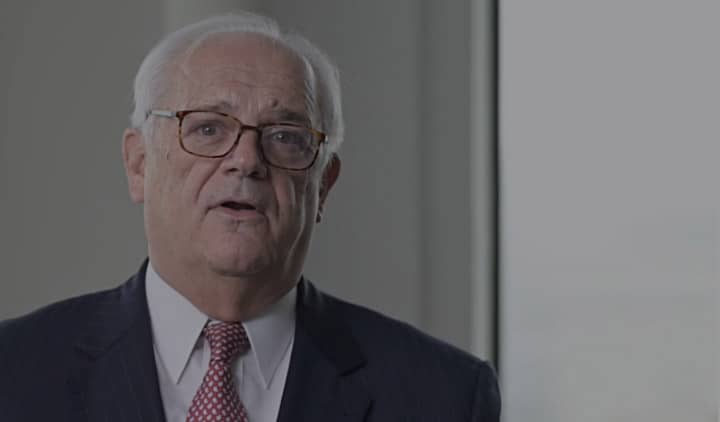Every day, thousands of bicyclists hit the sidewalks and streets in the Golden State. Bicycling is a popular mode of transportation in California, with benefits to one’s health, finances, and the environment. Unfortunately, not all bicyclists enjoy their rides accident-free. When bike crashes do happen, helmets can be instrumental in preventing serious head and brain injuries. Safety isn’t the only reason to wear a bicycle helmet in California, however; it’s also part of the law.

What Does the Law Say? (Article 4, California Vehicle Code)
Bicyclists can find the full text of California’s helmet and other related laws in the state’s Vehicle Code, Article 4: Operation of Bicycles [21200 – 21213]. Here, it states that no one under the age of 18 can ride a bicycle on a bikeway, street, or any other public path or trail unless he or she wears a helmet that fits properly, fastens correctly, and adheres to accepted safety standards.
These standards can come from either the American Society for Testing and Materials (ASTM) or the United States Consumer Product Safety Commission (CPSC). Do not confuse California’s bicycle helmet laws with the state’s motorcycle helmet laws. Although the state classifies both modes of transportation as “vehicles,” the helmet laws differ. All motorcyclists, regardless of age, must wear approved helmets at all times while operating or riding motorcycles in California.
Who Must Wear a Helmet?
Any child under the age of 18 in California must wear a helmet when riding or operating a nonmotorized scooter, bicycle, roller skates or skateboard in the aforementioned areas. This includes children 17 and younger who are the sole occupants of bicycles or other included vehicles, as well as children who are riding as passengers on these vehicles, with or without an adult present.
When riding on privately owned properties, such as in one’s yard or driveway, helmet laws may not apply. It is only when riding on public streets, bike paths, or trails that children and teens 17 and younger must wear helmets. Adults 18 and older do not need to wear bicycle helmets at any time in the state of California. However, wearing a helmet regardless of age is important for personal safety.
Violating the state’s bicycle helmet laws can result in a fine of no more than $25. It will be the parent or guardian’s responsibility to pay the fine for an unemancipated minor who receives a traffic citation for failing to wear a helmet.
Exceptions to the Statewide Rule
Some municipalities in California have enacted their own bicycle helmet laws in addition to the statewide law pertaining to children 17 and younger. In Bidwell Park, the city of Chico, and El Cerrito, bicyclists of all ages must wear helmets. Even if you’re 18 and older, you must legally wear an approved and properly fitting bicycle helmet to ride in accordance with the law. Otherwise, you might face a $25 fine – even if you’re a nonresident in the city or just passing through.
How Does the State Allocate the Fines It Collects for Bike Helmet Violations?
The majority (72.5%) of the amount law enforcement collects from fines due to not wearing a bicycle helmet will go to an account in the county treasury, for use by the county health department. The health department will use these funds to pay for safety education regarding bicycles, nonmotorized scooters, roller skates, and skateboards, as well as to assist low-income families to obtain proper bicycle helmets for children (either for purchase or on loan). The county can contract workers to operate this program.
Twenty-five percent (25%) of the funds collected will go to the treasury of the city in which the violation occurred. This 25% will go to the county health department with the other 72.5% if the violation happened in an unincorporated area in California. The final 2.5% of the fine collected will go into the county treasury account for the health department to use as described above.
How to Make Sure Your Helmet Meets the Legal Standard
According to the California Vehicle Code, bicycle helmets must meet certain standards in terms of construction, manufacturer, safety, and fit. These standards can come from the CPSC or the ASTM, which have special rules to ensure the safety and quality of approved helmets. In addition to these standards, bicycle helmets must also comply with the standards of either Snell or the American National Standards Institute (ANSI). A summary of all required standards is as follows:
- CPSC. The CPSC requires that helmets don’t block riders’ vision, don’t fall off when the rider falls, and significantly reduce the impact to the rider’s head in the event of a collision with a hard surface.
- ASTM. The ASTM standards ask that helmets pass tests for impact attenuation, the strength and stability of the retention system (straps) and its attachment to the helmet, and special tests according to particular headgear. ANSI standards are identical to ASTM standards.
- Snell. These bicycle helmet standards are the strictest in the world. Snell-certified helmets must pass tests for impact management, positional stability, retention system strength, and extent of protection over the head.
All standards are similar, but each organization uses unique testing methods. Look for stickers of approval to make sure you’re wearing a helmet that meets the legal standard. Otherwise, you could be putting yourself at risk of personal injuries and legal liability. Wearing a non-approved helmet is the same as not wearing one at all in the eyes of the law. It might also not be as effective as a proper helmet in terms of safety.
All bicycle helmets for sale must contain prominent labels marketing their certification from the manufacturer that they meet the required standards. Selling a helmet that does not comply with the requirements is against the law according to the California Vehicle Code.
Bicycle Helmet Fit Requirements
Bicycle helmets must not only meet accepted manufacturing standards – they must also fit the rider’s head properly. A “properly fitted and fastened” bicycle helmet will protect the head better than one that fits poorly. A bicycle helmet should sit low and level on the head, covering most of the rider’s forehead (one or two finger-widths above the eyebrows). It should be the right size according to the diameter of your head and fit snugly. The left buckle should sit comfortably and snugly under the chin. The rider should be able to fit only one or two fingers under the strap.
If your bicycle helmet rocks backward or forward when you move or ride, it’s probably too large or loose. If the helmet sits too high or does not comfortably buckle even with strap adjustments, it may be too small. When you open your mouth wide, you should feel the helmet pull down on your head. If it does not, tighten the chin strap. Never wear a helmet that doesn’t fit right or won’t buckle. Replace helmets that have been involved in accidents.
Bicycle Helmet Safety Facts
Wearing a bicycle helmet is about more than just obeying the law. It’s also the best way to prevent serious and fatal head injuries. According to the National Highway Traffic Safety Administration (NHTSA), 840 bicyclists died throughout the U.S. in 2016. Proper helmets may have been able to prevent many of these fatalities. In many traffic accidents in San Francisco, bike helmets are the only things that come between the biker’s head and the asphalt. The following bicycle helmet facts may convince you to wear one, even if you don’t have to by law:
- The most serious bicycle accident injuries are to the head and brain.
- Studies show helmet use can reduce the odds of head injuries in accidents by about 50%, and the odds of injuries to the neck, face, and head by 33%.
- Bike helmets aren’t just for kids – around 87% of all bicycle accident deaths are adults 20 and older.
Despite proven facts supporting the importance of wearing bicycle helmets, a large number of adults (and even children) use bicycles every day without strapping on proper headgear. The Centers for Disease Control and Prevention finds that less than half of all bicyclists wear helmets. Older children are less likely to wear helmets than younger ones. Not wearing a helmet can have serious repercussions physically, criminally, and legally.
Liability Issues and Helmet-Wearing
Many cases have existed in which injured bicyclists lose some or all their financial compensation for an accident due to lack of helmet-wearing. If a bicyclist goes against the law and fails to wear a proper bicycle helmet in states and cities that require helmet-wearing, that biker may be at least partially to blame for subsequent head or brain injuries. While not all courts will permit the defense to use this as a reason to escape liability, in general, it is a possible defense if the law required the plaintiff to wear a helmet, but he/she failed to do so.
California is a pure comparative negligence state. This means a plaintiff may still recover damages even if he or she was 99% responsible for the accident. The courts will reduce an at-fault plaintiff’s financial award by an amount equivalent to his/her percentage of fault for the accident or injuries. In a case involving a bicyclist that negligently failed to wear a helmet when the law required otherwise, he or she may receive only partial compensation for injuries to the head, brain, face, or neck that helmet-wearing reasonably would have prevented.
It is up to the plaintiff to prove the defendant’s fault for the bicycle accident. It is also the plaintiff’s burden to defend against allegations involving comparative negligence. If you’re involved in a bicycle accident with or without a helmet, the best way to protect your rights and maximize compensation is with representation from an attorney. Our San Francisco bicycle accident lawyers at Walkup Melodia Kelly & Schoenberger can help you understand your rights and responsibilities as a bicyclist in California, including the rules relating to helmet-wearing.


